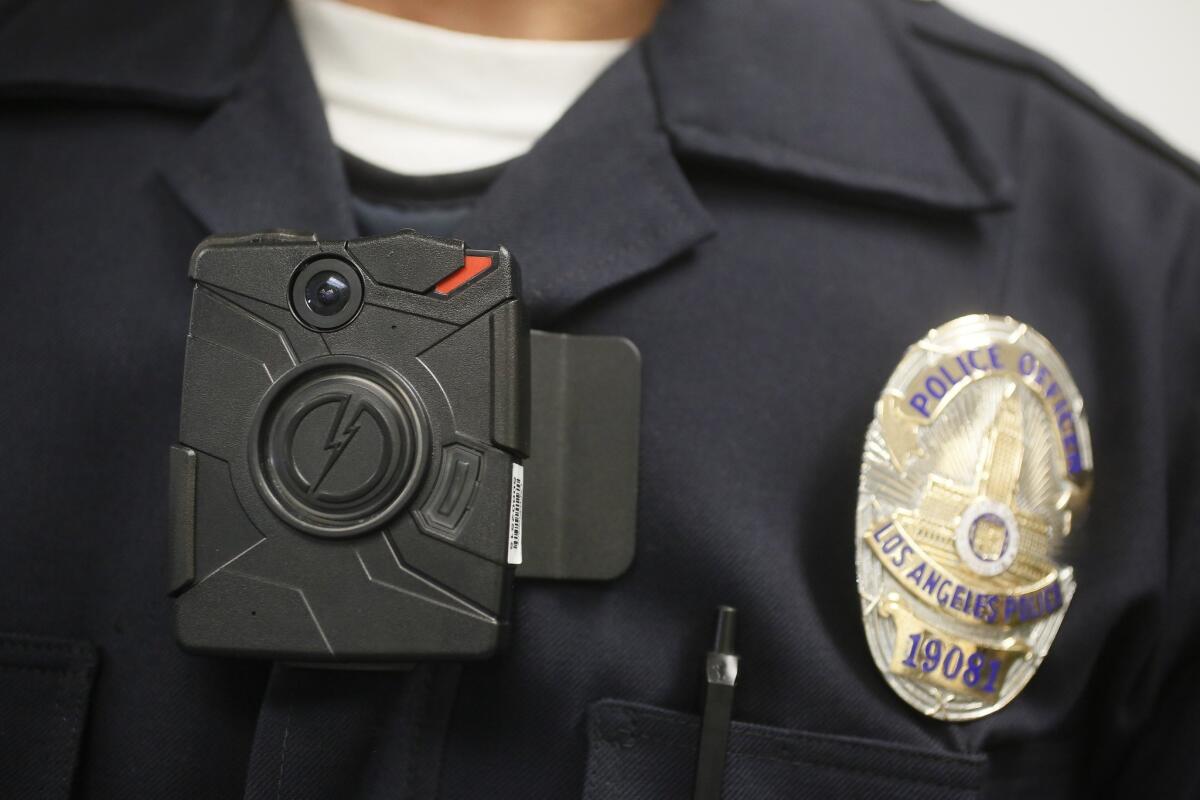After a successful trial, Burbank officials OK body-worn cameras for police

All Burbank Police officers will soon be equipped with body-worn cameras despite some internal opposition.
The Burbank City Council unanimously voted on Tuesday to enter into a five-year contract with Axon, formerly Taser, to purchase 140 body cameras and 30 in-car camera systems, which police officials say is another tool for law enforcement to use to increase transparency and manage risk, as well as conform with the current best practices and procedures in policing.
The city is projected to pay Axon about $2.2 million over the duration of the agreement, with annual payments coming in at about $400,000, except during the first year when Burbank is expected to pay $666,677, said Josephine Wilson, the police administrator for the department.
Burbank is also creating two new administrative analyst positions within the police department, estimated to cost about $85,000 per person a year, to oversee the processing of the footage, training connected to the devices and coordination between the city and district attorney’s offices.
The contract with Axon also includes unlimited storage and software upgrades, new body-worn camera upgrades every three years, new in-car equipment every five years, training for use of the devices and a protective clause that allows Burbank to terminate the deal if the company delays on product delivery or if the city cannot come up with the funding to continue the program.
“It can be Linden, N.J., Paducah, Ky. or Burbank. No one is exempt from an unexpected, catastrophic event,” Michael Albanese, deputy chief, said. “With digital technology, it gives something that protects the officer.”
For the last 9½ years, Burbank has been experimenting with body-worn devices, including audio-only recorders, Albanese said.
It wasn’t until September 2018 that the department started field testing body-worn cameras.
Albanese said the department tested cameras that year made by the company Utility. It received 14 body cameras and three in-car cameras to use for four months and cost the city $20,000.
At the end of that run, Albanese said Utility’s devices failed to meet the criteria the department set for the equipment. They had low battery life, misassigned incident numbers on the footage and had poor mounting reliability.
This past February, the department negotiated a free 90-day pilot program with Axon, in which the company provided 17 body cameras and two in-car cameras.
Albanese said Axon’s products and services met and exceeded the city’s criteria and were recommended by 23 officers within the department.
While body-worn cameras have provided highly valuable evidence, J.J. Puglisi, president of the Burbank Police Officers’ Assn., told the City Council that the money spent on the cameras could be spent on getting police staffing levels up.
The department currently has 141 sworn police officers, but the maximum number allowed by the city is 160.
Although the police officers’ association does not oppose officers having the tools they need to do their jobs, Puglisi said he thinks there should be more boots on the ground and that the city should approve a new contract with the police department to pay their employees a fair wage.
“What [residents] want is police officers in the street to protect them,” Puglisi said. “We’re hemorrhaging. We’re reaching critical mass. We cannot hire, and we cannot effectively retain officers.”
